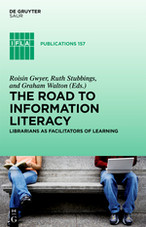I guess that many of us are fairly alright with using
PowerPoint; after all, it's still the leading and most widely used presentation software out there (as an aside, here's a quick
MS PowerPoint vs. Open Office Impress comparison/discussion). But when it comes to creating more dynamic, interactive online learning, pushing the capabilities of standard presentation software becomes quite challenging.
E-learning refers to the use of dynamic electronic mediums (e.g. through
podcasts and
webcasts) that provide access to online learning resources. Gruca (2010) points out that e-learning is a complex concept mixing a wide range of learning methods, different educational forms, models, and computer techniques. It can be an alternative to traditional learning or represent blended learning as enhancement to traditional teaching. A brief history of e-learning can be found
here. E-learning offerings in the library typically revolve around information retrieval strategies, organising information and interactive training on specialist databases. The visual presentation below shows how complex the reality of e-learning is from a librarian's perspective.
Clearly, multiple facets steer e-learning solutions with library users as their core audience in mind. For example, different actors are involved in the creation of e-learning products (look out for participants in the diagram above): information technologists, teachers, librarians, students, instructional designers and developers.
However, not all libraries have access to relevant specialist personnel in-house, let alone the required budgets to cover the production cycle expertly. In extreme cases, the production of e-learning is a one-person show coming along with all its advantages (total control) and disadvantages (limited/no access to specialist expertise).
Going solo requires a bit of legwork and patience. It's a good idea to cover some ground before getting into the thick of it. Below are three handy resources (there's a lot more out there):
The e-learning centre is a free information resource about e-learning and learning technologies for business education, not-for-profit or the public sector. The site provides a collection of resources including book reviews, research articles, websites, case studies and more. See also the E-learning centre archive site.
Theory and Practice of Online Learning
This is a comprehensive open access e-book on e-learning that covers the following four core areas:
1) Role and function of theory in online education development and delivery
2) Infrastructure and support for content development
3) Design and development of online courses
4) Delivery, quality control, and student support of online courses
All authors come from Canada's
Athabasca University.
Developing Online Patron Tutorials - Continuum of Tutorial Tools
A brief guide that explains how to get started in the creation of online patron tutorials. It's short and snappy considering budget, time commitment and required expertise.
There's also the important question of what tools go hand in hand with PowerPoint to create more sophisticated, interactive e-learning solutions. I have listed three alternatives below, all of which are extensive and powerful in terms of their built-in standard features. The choice depends on personal preference and available budget.
PowerPoint and iSpring Suite
- 30-day free trial
-
Features
- Demos
PowerPoint and Articulate Studio (Standard)
- 30-day free trial
- Contains
Presenter,
Quizmaker,
Engage and
Video Encoder (Demos under each package)
Check out this
webcast on Usability in e-learning created with Articulate.
PowerPoint and Adobe Presenter
- Free trial
- Features
It'd be interesting to find out about your approach to e-learning. What authoring tools and other resources do you use? What are the challenges from your experience? Any insights and examples would be greatly appreciated.
Ref.
Gruca, A. N. (2010). E-Learning in Academic Libraries. New Review Of Information Networking, 15(1), 16-28. doi:10.1080/13614571003741395
Zdravkova, K. (2010). E-LEARNING 2.0 AND ITS IMPLEMENTATION. Infotheca - Journal Of Informatics & Librarianship, 11(2), 3-19.















